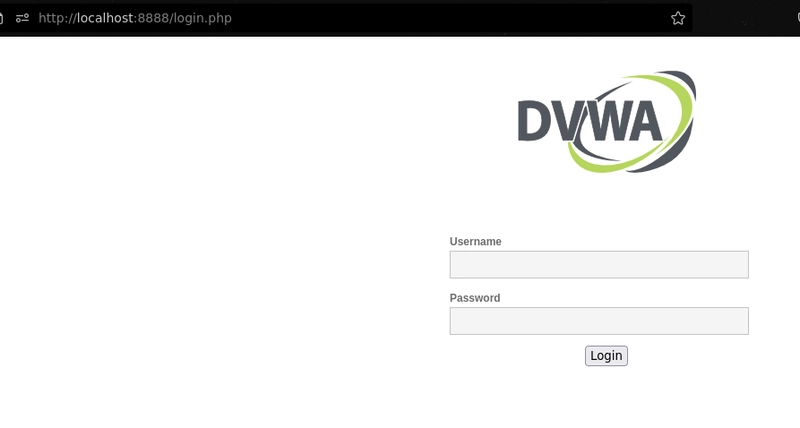In Part 1, we learned how to scan a server and interpret basic Nmap output. Now it’s time to simulate a real pentest — from detecting services to running actual vulnerability scans — all in a safe, legal, and local environment using Docker.
No signup. No cost. Just you, your terminal, and some powerful open-source tools.
What We'll Do
We'll spin up a deliberately insecure web application (DVWA) using Docker and use Nmap to:
- Find which ports are open on a computer or server
- See what programs (services) are running and which versions they are
- Look for known security issues (vulnerabilities)
- Understand and make sense of the scan results like a real ethical hacker
Step 1: Set Up the Vulnerable App (DVWA)
We’re using DVWA (Damn Vulnerable Web Application), a popular training ground for beginner pentesters.
Requirements:
- Docker installed on your machine
- Nmap installed
Start DVWA with Docker:
docker run -d -p 8888:80 vulnerables/web-dvwa
This command will:
- Download the DVWA image (if not already present)
- Run it inside a container
- Expose the web app on your local machine at
http://localhost:8888
When opening http://localhost:8888 you will see something like this
Step 2: Identify the Service and Version
Let’s start with a basic scan to see what’s running:
nmap -sV -p 8888 127.0.0.1
This command tells Nmap to:
-
-sV: Detect service versions -
-p 8888: Focus only on port 8888 (where our app runs)
Sample Output:
PORT STATE SERVICE VERSION
8888/tcp open http Apache httpd 2.4.25 ((Debian))
From the above output we can understand:
- What is running: a web server
- Which server: Apache
- Which version: 2.4.25 (Debian build)
📌 Now that we know the server and version, we can check for known vulnerabilities:
Just Google:
apache 2.4.25 vulnerability site:cvedetails.com
Or go to cvedetails.com and search for Apache 2.4.25. You'll find a list of known CVEs (Common Vulnerabilities and Exposures), which tell you what issues exist in that version and how critical they are.
For example:
- CVE-2017-3169 — Path traversal vulnerability
- CVE-2017-3167 — Weak authentication validation
Step 3: Run Vulnerability and Recon Scripts
Now let’s dig deeper. We’ll use Nmap’s built-in http-* scripts to uncover:
- Hidden directories
- HTTP methods allowed
- Security headers
- Web page titles
nmap -sV -p 8888 --script "http-enum,http-methods,http-headers,http-title" 127.0.0.1
What This Does:
-
http-enum: Finds common hidden folders (/admin,/config, etc.) -
http-methods: Shows which actions are allowed (e.g., GET, POST) -
http-headers: Reveals cookies, cache settings, etc. -
http-title: Fetches the page title to get app info
Interpreting the Output (Sample)
The below is the output of the nmap command
8888/tcp open http Apache httpd 2.4.25 ((Debian))
| http-enum:
| /login.php: Possible admin folder
| /robots.txt: Robots file
| /.gitignore: Dev file exposed
| /config/: Directory listing enabled!
| /docs/: Another browsable folder
|_ /external/: Same here
| http-methods:
|_ Supported Methods: GET HEAD POST OPTIONS
| http-headers:
| Set-Cookie: security=low
| Content-Type: text/html;charset=utf-8
|_ (Request type: HEAD)
| http-title: Login :: Damn Vulnerable Web Application (DVWA) v1.10
What This Means:
| What You See | Why It Matters |
|---|---|
/login.php |
Admin-style login page – a potential target |
/config/, /docs/
|
Browsable folders – may expose sensitive files |
/.gitignore |
Indicates source control might be exposed |
Set-Cookie: security=low |
The app is deliberately insecure — jackpot |
Apache 2.4.25 |
Known to have public vulnerabilities |
This gives us a map of attack surfaces — perfect for the next steps in a pentest (e.g., directory traversal, brute-forcing, exploiting).
What You've Learnt so far
With just a few Nmap commands, you’ve:
- Scanned a live (but safe) web app
- Identified real-world services and versions
- Found directories, cookies, and methods
If you're a software developer who enjoys exploring different technologies and techniques like this one, check out LiveAPI. It’s a super-convenient tool that lets you generate interactive API docs instantly.
So, if you’re working with a codebase that lacks documentation, just use LiveAPI to generate it and save time!
You can instantly try it out here! 🚀





Top comments (0)